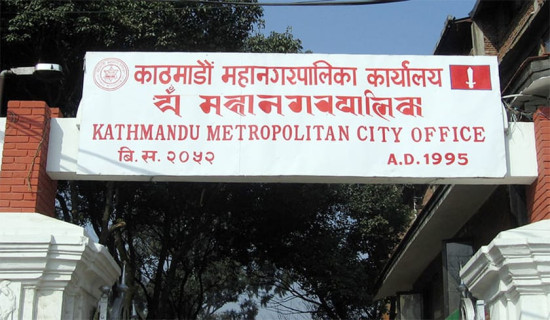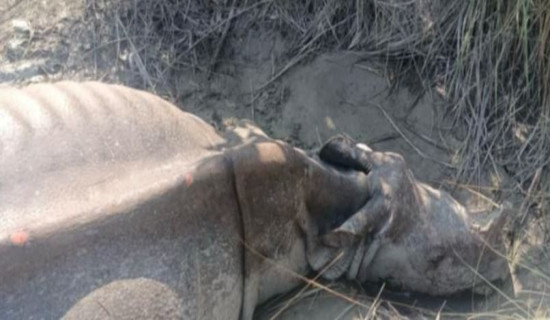- Friday, 17 October 2025
KMC begins to install air quality monitoring devices
By A Staff Reporter, Kathmandu, Dec. 11: Kathmandu Metropolitan City (KMC), in collaboration with the Partnership for Healthy Cities Initiative, has begun installing air quality monitoring devices at 18 locations across the city. The first device was installed on Monday at the KMC premises by Deputy Mayor Sunita Dangol.
As part of this initiative, KMC has declared the month of Poush (December/January) as “Air Pollution Awareness Month” to raise awareness about air pollution control measures and discourage open burning, which exacerbates pollution during the peak winter season.
With the start of the dry season, people in the Valley are compelled to breathe very unhealthy and hazardous air. The installation of these devices will help in finding the situation so that it would be easy to take possible measures to tackle the situation, experts said.
Commenting on the initiative launched by KMC, air quality expert Dr Bhupendra Das said that it would significantly address the data gap in air quality monitoring. “This is a commendable step. It will provide insights into road pollution levels and aid in policy formulation, ultimately contributing to air pollution mitigation,” said Dr.Das.
The Partnership for Healthy Cities Initiative is supported by Bloomberg Philanthropies, in partnership with the World Health Organisation (WHO) and the global health organisation ‘Vital Strategies’. The Partnership for Healthy Cities Initiatives (PHCI) is implemented by the National Federation of Youth NGO Nepal (NFYN) in close coordination with the KMC office.
Speaking at the first installation programme on Monday, Deputy Mayor Dangol said, “This is an important initiative launched by KMC to control pollution and demonstrate the KMC's commitment to tackling air pollution. We have a responsibility to provide clean and fresh air to every citizen, and this is the first important step by the KMC, which can provide valuable insights for policy-making level for controlling air pollution.”
She said, “We have also taken initiatives to clean the city by discouraging open burning and raising awareness about its harmful effects. Similarly, we have started a vehicle-free Handigaun on Saturdays, which is part of our effort to reduce carbon emissions while offering social and cultural benefits to the local community.”
Dangol shared the strong commitment of KMC to utilising data from these devices in well-informed policies and ensuring that every city resident's right to live in a healthy city is ensured. She also assured that the device would not remain only as a showcase event but also as the beginning of something substantial in reducing air pollution in the city.
KMC is the first local government entity to initiate air quality monitoring on its own.
Through this initiative, KMC is installing 18 sensors to monitor PM 2.5 concentration on their own to support the city office in developing data-based policies and interventions at the localised level. Clarity Node-S is the device procured under the initiative which is trusted by more than 70 governments from London to Bogota to Jakarta.
According to Sanjeeb Pandey, Project Lead, PHCI Project for Kathmandu, the device comes with a solar-powered system and does not require any power supply, in addition, the device has data connectivity built up in the device that can relay real-time data in the dashboard. All the devices being installed by KMC have undergone the process of custom colocation and calibration with ground stations in the support of the Department of Environment.
The process of calibration further ensures the data reliability and accuracy as prescribed by USEPA, he said.
He also briefed the technical details of the device and also shared about making the data public through the web portal and app of KMC. He also urged all private and public entities to be a part of the 'Air Pollution Awareness Month Campaign.'
Sarita Rai, Head of the Environment Management Department of KMC, said, “KMC is committed to improving the air quality in the city and is launching several programs such as vehicle testing and severity on open waste burning.”
She also announced the month of Poush (December/January) as “Air Pollution Awareness Month” in coordination with the Partnership for Healthy Cities Project.
Rajaram Shrestha, National Programme Officer of the WHO Nepal office, highlighted the significance of mitigating health risks as he emphasised air pollution risk as a 'Silent Killer.'
The PHCI is a prestigious global network of 74 cities committed to saving lives by preventing non-communicable diseases (NCDs) and injuries.
















